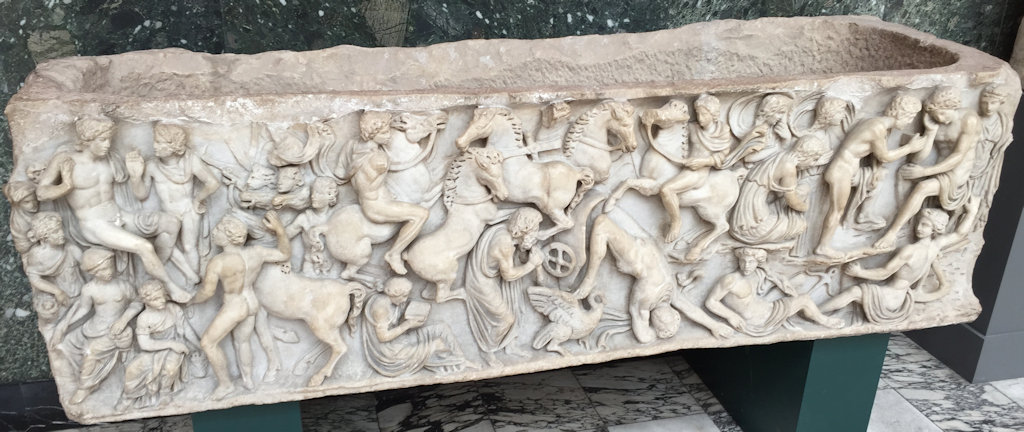Phaëton sarcophagus
Found in Ostia, later in Villa Pacca in Rome.
Date: late second century AD. W. 2.07, h. 0.64, d. 0.72.
Phaëton, son of Helios, wanted to drive his father's chariot across the heavens and perished. The story is depicted in three scenes. The first scene is on the left. Phaëton stands on the ground, in front of his enthroned father, and makes a supplicating gesture with his right hand. His father also raises his right hand, in an attempt to avert the plea. In the lower left corner are the four seasons, from top to bottom: the cloaked Winter, Autumn with a crown of grapes and a fruit basket, Summer with a fruit basket, and Spring with grain ears and a flower basket.
In the central scene Phaëton falls from the chariot. From either side the Dioscures are approaching to capture the horses. To the left of Phaëton are a reading female figure, an elderly man with a staff and a swan. The woman has been interpreted as a goddess of fate. The swan is the transformed Cycnus, friend of Phaëton. The man is between is either Cycnus before the transformation, or Phaëton's pedagogue.
In the third scene Hermes brings the news of the catastrophe to Helios. Behind Helios is Clymene, Phaëton's mother. To the left are his sisters, the Heliades. On the ground are the reclining personifications of the ocean and the earth.

Poulsen 1951, cat. nr. 783. Inv. nr. 847. S.A. Paspalas, "The 'pedagogue' and cygnus at Phaethon's fall", Mediterranean Archaeology 17 (2004), 183-191. Arachne 8891. Photo: Flickr, Ozymandias.